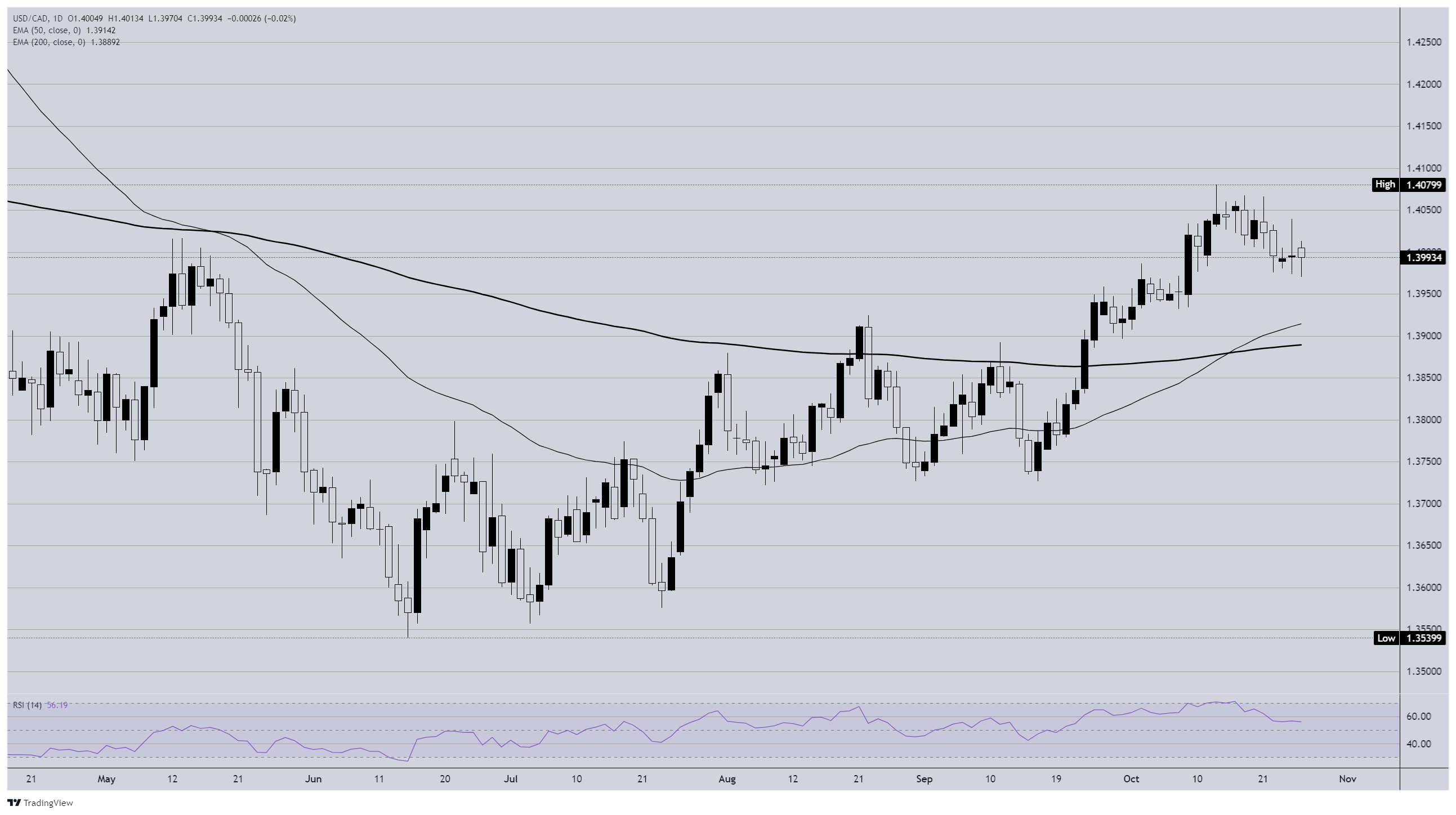Canadian Dollar flows slow to a crawl ahead of central bank showdown
- The Canadian Dollar remains trapped in near-term volatility against the US Dollar.
- The Bank of Canada and the Federal Reserve both deliver interest rate decisions this week.
- The US continues to battle its own position in trade talks on multiple fronts.
The Canadian Dollar (CAD) churned within familiar levels on Monday as investors brace for double-header central bank showings this week. Both the Bank of Canada (BoC) and the Federal Reserve (Fed) will be debuting their latest interest rate decisions on Wednesday, and USD/CAD flows will likely remain hampered until Loonie traders can get a sense of how the rate differential will shape up.
US President Donald Trump continues to spiral into protracted trade spats with the majority of the US’s closest trading partners. Investors are still betting that fresh China tariff threats will give way to another acquiescence from the Trump administration. Closer to home, Donald Trump severed all trade talks with Canada after growing irate at a political commercial that aired in key US states, which directly quotes former President Ronald Reagan on the dangers and general idiocy of using tariffs as a trade policy.
Daily digest market movers: Canadian Dollar slows to a crawl ahead of interest rate decisions
- The Canadian Dollar has held steady within a familiar technical zone against the US Dollar.
- USD/CAD remains hamstrung near 1.4000 as markets await new reasons to pick a direction.
- The BoC’s latest rate call is due on Tuesday, alongside the Fed’s latest interest rate decision.
- The Fed is on pace to deliver a second straight interest rate cut for 25 bps.
- The BoC’s outlook is much more complex, making the BoC’s potential decision to cut rates a riskier proposition.
Canadian Dollar price forecast
USD/CAD continues to consolidate just below the 1.4050–1.4080 resistance zone after a strong October rally. The pair remains above both the 50-day EMA (1.3914) and 200-day EMA (1.3889), maintaining a constructive short-term structure.
Price has pulled back modestly over recent sessions, showing early signs of stabilization near 1.3980–1.4000. A sustained close above 1.4080 would signal renewed momentum toward the 1.4150 area, while a breakdown below the 50-day EMA could open the door for a deeper retracement toward 1.3850 support.
RSI sits near mid-range, indicating neither overbought nor oversold conditions. For now, the market is pausing within an uptrend that remains intact unless the pair loses the 1.39 handle.
USD/CAD daily chart

Canadian Dollar FAQs
The key factors driving the Canadian Dollar (CAD) are the level of interest rates set by the Bank of Canada (BoC), the price of Oil, Canada’s largest export, the health of its economy, inflation and the Trade Balance, which is the difference between the value of Canada’s exports versus its imports. Other factors include market sentiment – whether investors are taking on more risky assets (risk-on) or seeking safe-havens (risk-off) – with risk-on being CAD-positive. As its largest trading partner, the health of the US economy is also a key factor influencing the Canadian Dollar.
The Bank of Canada (BoC) has a significant influence on the Canadian Dollar by setting the level of interest rates that banks can lend to one another. This influences the level of interest rates for everyone. The main goal of the BoC is to maintain inflation at 1-3% by adjusting interest rates up or down. Relatively higher interest rates tend to be positive for the CAD. The Bank of Canada can also use quantitative easing and tightening to influence credit conditions, with the former CAD-negative and the latter CAD-positive.
The price of Oil is a key factor impacting the value of the Canadian Dollar. Petroleum is Canada’s biggest export, so Oil price tends to have an immediate impact on the CAD value. Generally, if Oil price rises CAD also goes up, as aggregate demand for the currency increases. The opposite is the case if the price of Oil falls. Higher Oil prices also tend to result in a greater likelihood of a positive Trade Balance, which is also supportive of the CAD.
While inflation had always traditionally been thought of as a negative factor for a currency since it lowers the value of money, the opposite has actually been the case in modern times with the relaxation of cross-border capital controls. Higher inflation tends to lead central banks to put up interest rates which attracts more capital inflows from global investors seeking a lucrative place to keep their money. This increases demand for the local currency, which in Canada’s case is the Canadian Dollar.
Macroeconomic data releases gauge the health of the economy and can have an impact on the Canadian Dollar. Indicators such as GDP, Manufacturing and Services PMIs, employment, and consumer sentiment surveys can all influence the direction of the CAD. A strong economy is good for the Canadian Dollar. Not only does it attract more foreign investment but it may encourage the Bank of Canada to put up interest rates, leading to a stronger currency. If economic data is weak, however, the CAD is likely to fall.

